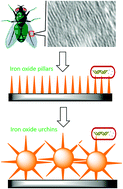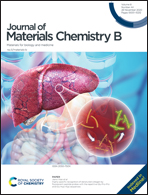Iron-based nano-structured surfaces with antimicrobial properties†
Abstract
Bactericidal nanopillar arrays on cicada wings represent a non-toxic antimicrobial technology as they work through physical cell rupture instead of a chemical mechanism. Here, we reported iron-based nanopillar arrays (FeOOH and Fe2O3) that can grow on various substrates by a simple solution method. These surfaces showed good structure-based antimicrobial activity. Even more simply, we have prepared urchin-type FeOOH and Fe2O3 particles, which can be easily coated onto various substrates to create structure-based disinfection surfaces. This work provides a simple and general methodology to apply this killed-by-structure technology for real world uses.



 Please wait while we load your content...
Please wait while we load your content...